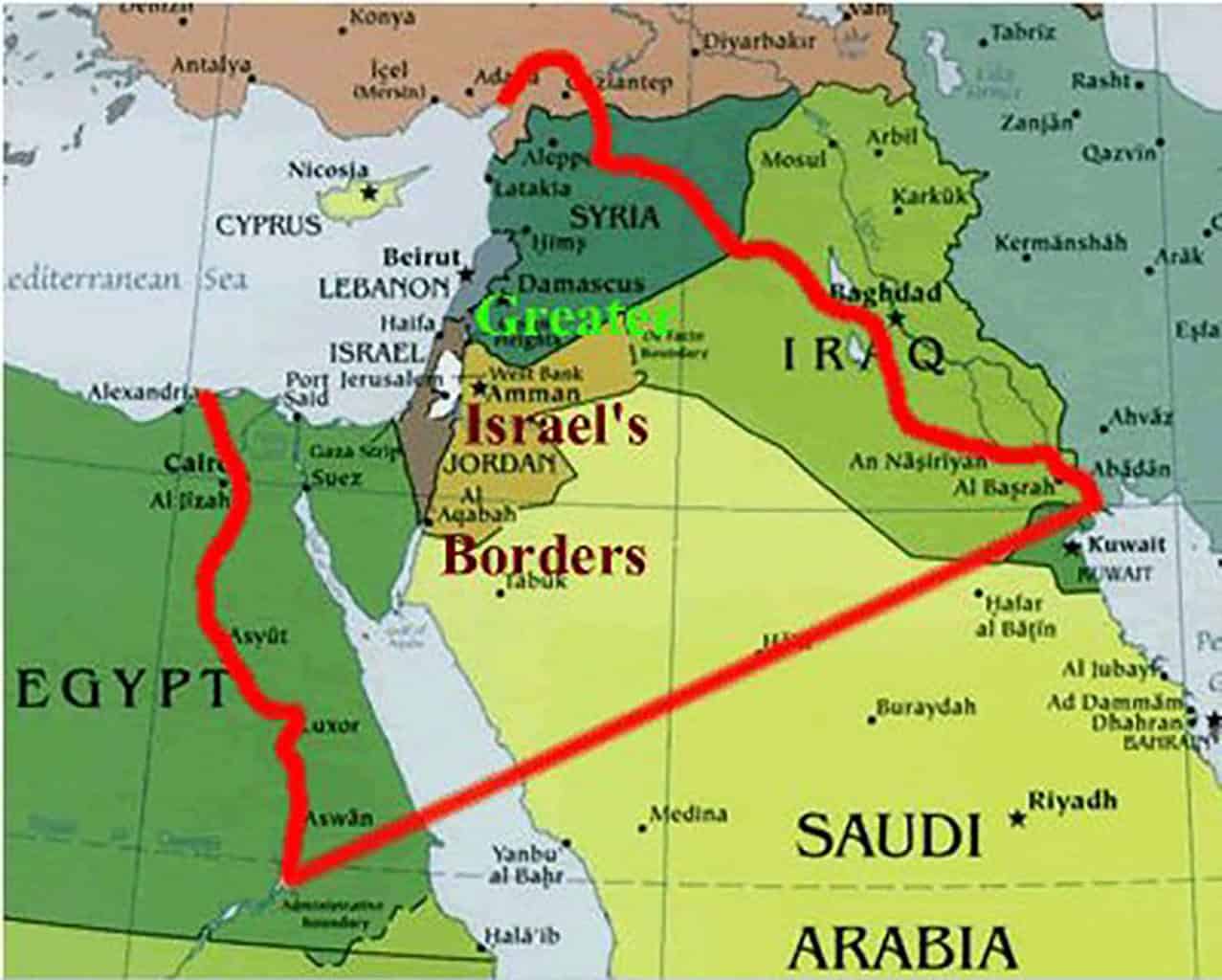The Agenda: “From the Brook of Egypt to the Euphrates.”
For the last 70 years, Palestine has been occupied by Zionists in the name of Judaism. In contrast, other Middle Eastern countries have been pawns in the Zionist agenda. Post October 7, 2023, saw the escalation of genocide in Gaza. A year later on 1 October 2024, Israel breached the sovereign border of Lebanon. November 27 was the start of fighting in Syria creating opportunities for further destabilization in the area. In January, Israel escalated its violence in the West Bank bombing the Jenin refugee camp.
The stormy situation in the Arab world is part of the Zionist’s nefarious agenda of “From the Brook of Egypt to the Euphrates.”
In Biblical context, the phrase “From the Brook of Egypt to the Euphrates” appears in Genesis 15:18 where the Almighty outlines the boundaries of the land He promised to Abraham’s descendants. As a symbol of vastness, the phrase is used to represent a large and complete territory, signifying the full extent of something. The descendants of Prophet Abraham, or Ibrahim in Arabic, Allah’s peace be upon him, are predominantly Muslim and Jewish.
The Zionist agenda for an Israeli state is framed in the symbolic context of the phrase.
In the publication The Zionist Plan for the Middle East, from Oded Yinon’s “A Strategy for Israel in the Nineteen Eighties,” published by the Association of Arab-American University Graduates, Inc. Belmont, Massachusetts, 1982 and translated and edited by Israel Shahak, the following middle eastern countries are considered Israel by Theodore Herzl and Rabbi Fischmann: Egypt, Lebanon, Syria, a partitioned Iraq, Jordan and a partitioned Saudi Arabia. Theodore Herzl the founder of Zionism noted in his Complete Diaries that the area of the Zionist State stretches “From the Brook of Egypt to the Euphrates.” Rabbi Fischmann, a member of the Jewish Agency for Palestine, declared in his testimony to the U.N. Special Committee of Enquiry on 9 July 1947: “The Promised Land extends from the River of Egypt up to the Euphrates, it includes parts of Syria and Lebanon.”
The genocide and displacement of Palestinians are very much part of the plan for the Middle East.
Plan Dalet of 1948 was a Zionist military plan for the conquest of Palestine in preparation for the establishment of a Zionist state. Historians assert that it was an integral part of a planned strategy for the expulsion and ethnic cleansing of the Palestinians. Ever since, Israel has continued to violently expel Palestinians from their homes and steal Palestinian land — acts of settler colonialism, both inside Israel’s internationally recognized borders and in the Palestinian territories occupied by the Israeli military since 1967; the West Bank, East Jerusalem, and Gaza. This is known to Palestinians as the Ongoing Nakba.
Palestine became the priority target since their perceived viable and independent presence as a people negates the essence of the Zionist state. Every Arab state, however, especially those with cohesive and clear nationalist directions, is a real target sooner or later, as noted in the publication.
The objective is to fragment the Arab world as we see Palestine fragmented into Gaza, West Bank, and East Jerusalem.
Israel’s plan of expansion into Jordanian territory in October was thwarted by Lebanese resistance and a cease-fire backed by the UN. There are 13 points to the cease-fire that are rooted in UN Security Council Resolution 170. Three of the points specifically acknowledge the sovereignty of Lebanon – Recognition of Self Defense, Deployment of Lebanese Armed Forces, and the Exclusivity of the Authority for Lebanese Forces.
A fragmented Syria
Prior to the most recent Israeli aggressions, Syria was already fragile due to 13 years of civil strife that has resulted in the fragmentation of the country. During the civil war, roughly 30% of the country was not under former President Assad and was controlled by a range of opposition forces and foreign troops, leaving 70% under Assad’s control, according to the Associated Press.
The AP noted that Robert Ford, the last-serving U.S. ambassador to Syria, pointed to months of Israeli strikes on Syrian and Hezbollah targets in the area, and to Israel’s current ceasefire with Hezbollah in Lebanon, as factors that provided Syria’s rebels with the opportunity to advance.
The publisher noted the authors seek acquiescence in their designs from the Syrian, Iraqi, Jordanian, and other Arab governments as well as from the Palestinian people. What they want and what they are planning for is not an Arab world, but a world of Arab fragments that is ready to succumb to Israeli hegemony. Oded Yinon in his essay, “A Strategy for Israel in the 1980s,” discusses “far-reaching opportunities for the first time since 1967” that are created by the “very stormy situation [that] surrounds Israel.”
Anisa Amatus-Sabur

